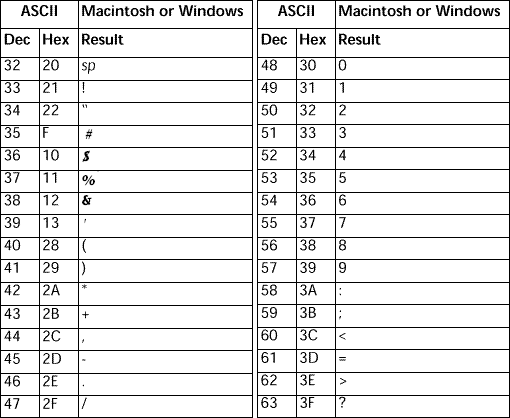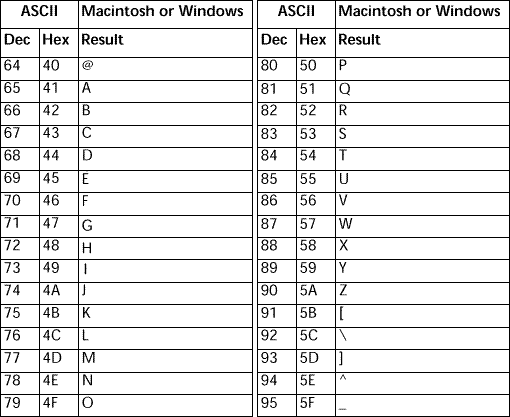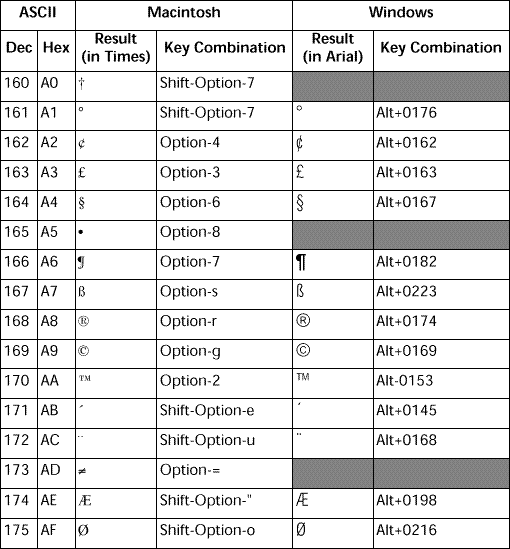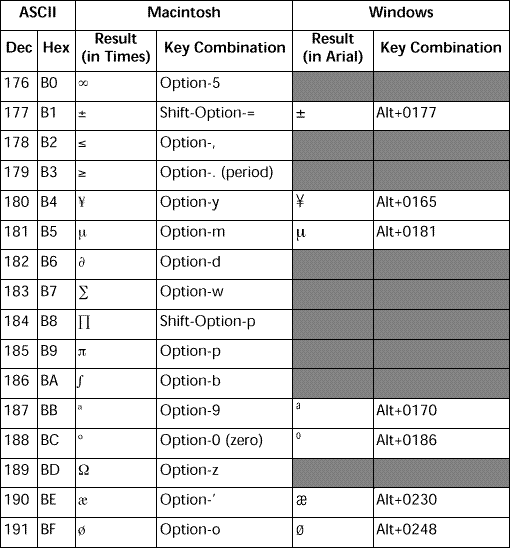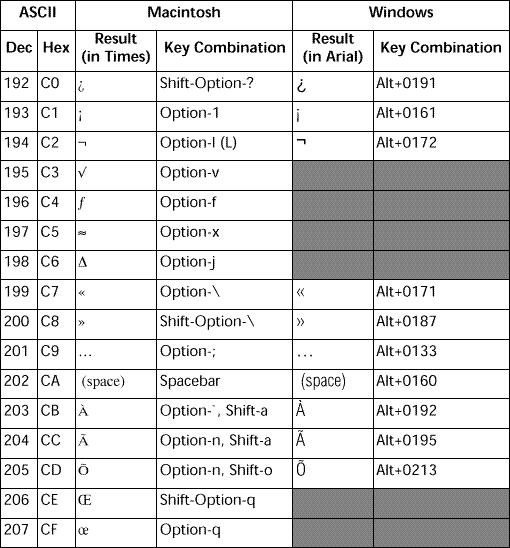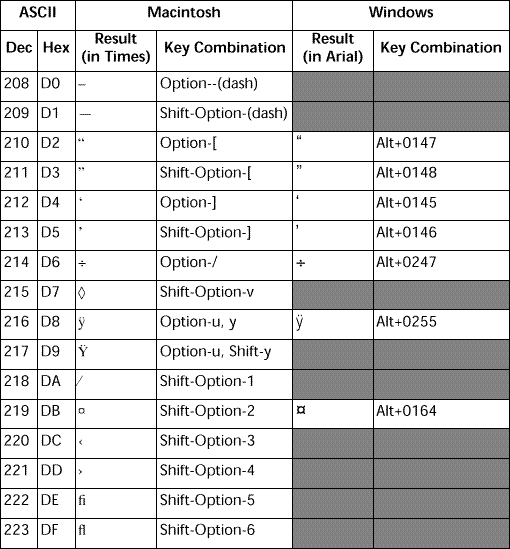Ascii Codes
ASCII - The American Standard Code for Information Interchange is a standard seven-bit code that was proposed by ANSI in 1963, and finalized in 1968. Other sources also credit much of the work on ASCII to work done in 1965 by Robert W. Bemer (www.bobbemer.com). ASCII was established to achieve compatibility between various types of data processing equipment. Later-day standards that document ASCII include ISO-14962-1997 and ANSI-X3.4-1986(R1997).
ASCII, pronounced "ask-key", is the common code for microcomputer equipment. The standard ASCII character set consists of 128 decimal numbers ranging from zero through 127 assigned to letters, numbers, punctuation marks, and the most common special characters. The Extended ASCII Character Set also consists of 128 decimal numbers and ranges from 128 through 255 representing additional special, mathematical, graphic, and foreign characters.
Ascii Charts

Legend
NUL (null)
SOH (start of heading)
STX (start of text)
ETX (end of text)
EOT (end of transmission) - Not the same as ETB
ENQ (enquiry)
ACK (acknowledge)
BEL (bell) - Caused teletype machines to ring a bell. Causes a beep
in many common terminals and terminal emulation programs.
BS (backspace) - Moves the cursor (or print head) move backwards (left)
one space.
TAB (horizontal tab) - Moves the cursor (or print head) right to the next
tab stop. The spacing of tab stops is dependent
on the output device, but is often either 8 or 10.
LF (NL line feed, new line) - Moves the cursor (or print head) to a new
line. On Unix systems, moves to a new line
AND all the way to the left.
VT (vertical tab)
FF (form feed) - Advances paper to the top of the next page (if the
output device is a printer).
CR (carriage return) - Moves the cursor all the way to the left, but does
not advance to the next line.
SO (shift out) - Switches output device to alternate character set.
SI (shift in) - Switches output device back to default character set.
DLE (data link escape)
DC1 (device control 1)
DC2 (device control 2)
DC3 (device control 3)
DC4 (device control 4)
NAK (negative acknowledge)
SYN (synchronous idle)
ETB (end of transmission block) - Not the same as EOT
CAN (cancel)
EM (end of medium)
SUB (substitute)
ESC (escape)
FS (file separator)
GS (group separator)
RS (record separator)
US (unit separator)
